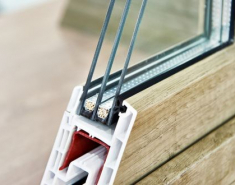Repair or replace: How much could you save with a DIY fix?
While previous generations were encouraged to ‘make do and mend’ our fast-fashion and even-faster technology driven society means few of us have the incentive, let alone enough time, to take on the mighty task of fixing a household gadget or garment ourselves.
Indeed, according to Ian Greenhalgh from glass repair specialists Cloudy2Clear, repair is not always appropriate.
“Sometimes, replacing is actually the best option all round,” he explained. “For example, the cost of repairing your already-obsolete iPhone just can’t be justified if you can upgrade to a new one for the same price. You’re better off selling it for parts on eBay and putting the money to your new contract.”
But there may be other items which can be salvaged if you are willing to dust off the cobwebs on your toolkit.
To help you make the right choice, experts at Cloudy2Clear have offered some useful tips to answer the question: should you repair it or replace it?
Disclaimer: If you aren’t experienced in repairing goods with electrical wiring in them, seek out a professional. No monetary saving is big enough to justify risking your life!
Signs that you should repair or replace
When you’re looking at whether to repair or replace, there are a few rules of thumb that can help you make the right decision.
The 50% rule
The 50% rule is a simple way of weighing up the cost of repairs against a replacement. It roughly works like this:
If a repair can be completed for less than 50% of the cost of replacement, you should choose to repair.
For example, if it costs £150 to repair your TV and £400 to buy a new one, you should repair the TV rather than replace it.
However, the 50% rule is only an initial guideline, so it doesn’t apply in all scenarios. Below are some instances in which you should commit to a replacement even if repairs would cost less than half the investment.
When you should replace rather than repair
The item is near or beyond its expected life
The item is unreliable and the consequences of failure pose an unacceptable risk
The repair cost exceeds the life cycle cost of a new appliance (especially relevant if it looks like the appliance will repeatedly fail)
If it can’t be repaired to the level where its performance is acceptable
The existing appliance is technologically obsolete
What’s the salvage value?
You should also consider the salvage value of the item in question. Salvage value is simply the amount of money you can get back if you sold your old item.
Large items like refrigerators or washing machines can often have significant salvage value because they contain plenty of otherwise-expensive parts. Selling on to a willing buyer can help you recoup some of your losses to go towards a new model.
Consumer electronics, on the other hand, don’t often fare well given the fast range of change. A laptop or games console can be completely obsolete in as little as five years, so you shouldn’t expect to salvage a significant cost.
Common household items: repair or replace?
With all of the above in mind, let’s take a look at some long-term household items that you might find springing a leak or blowing a fuse in their lifetimes and determine when you should repair and when to replace.
Source: https://bit.ly/2lXXizQ









